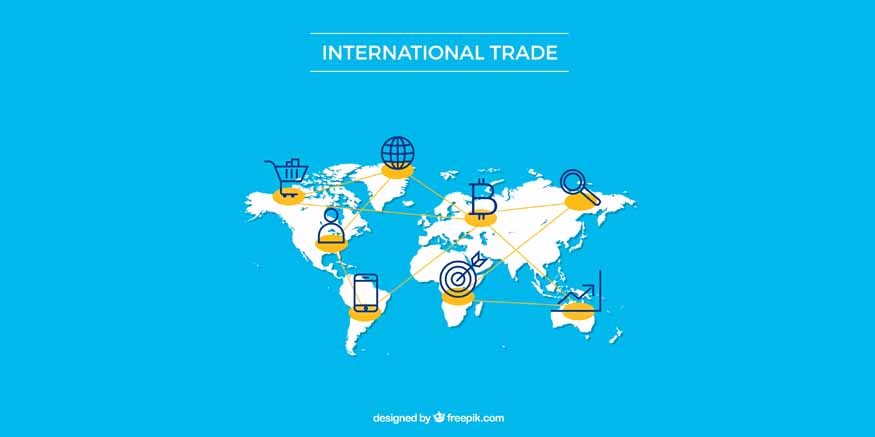Imagine the ancient Egyptians, Phoenicians, and Greeks bravely sailing across dangerous oceans and trekking through harsh deserts to deliver their goods to distant places. They were the pioneers of international trade, laying the groundwork for future trade routes. The Silk Road served as the main thoroughfare of the era, linking Asia and Europe through a complex web of land and sea paths. The Age of Exploration in the 15th and 16th centuries ignited global commerce. Adventurers like Christopher Columbus and Vasco da Gama discovered new trade paths and expanded worldwide trade like never before.
The history of trade and commerce is a testament to humanity’s ingenuity and adaptability. Since ancient times, the exchange of goods has played a crucial role in shaping civilisations, fostering cultural exchanges, and driving economic growth. From the barter system to sophisticated international trade agreements, the evolution of trade and commerce is intertwined with the progress of human society.
History of Trade and Commerce
At the beginning of human civilisation, people mainly traded by barter system. They would trade goods and services directly without using any kind of money. This method had its drawbacks since both people needed to want what the other had. Even with these limitations, the barter system was important because it set the stage for more advanced economic systems and introduced the idea of value and trade.

As societies grew more organised, it became clear that a common form of money was necessary. Precious metals such as gold and silver started to be used as currency, making transactions easier and allowing trade to expand. This was a major turning point in the history of trade and commerce, as it led to more economic specialisation and the development of early market economies.
Trade Routes in History
The establishment of trade routes throughout history was a crucial turning point. These pathways allowed for the transportation of goods, people, and ideas over long distances, bringing together various cultures and regions. One of the most well-known ancient trade routes was the Silk Road which connected China to the Mediterranean. This trade route made it possible to trade silk, spices, and other precious items. The Silk Road boosted economic growth and fostered cultural and technological exchanges between Eastern and Western societies.
Similarly, the Trans-Saharan trade routes linked sub-Saharan Africa with North Africa and the Middle East. These routes facilitated the trade of gold, salt, and other products, greatly influencing the economies and communities involved. The Arabian Peninsula was a key player in these trade networks, acting as a central point for traders and merchants from Africa, Asia, and Europe.
History of Trade
The Age of Exploration during the 15th and 16th centuries was a crucial moment in the evolution of trade and commerce. Driven by the quest for new trade routes and resources, European explorers set out on journeys that ultimately linked the Old World with the New World. This time period led to the creation of colonial empires and the growth of global trade networks. The exchange of products among Europe, the Americas, Africa, and Asia increased significantly, resulting in major economic, social, and political transformations.
A key example from this era is the triangular trade system. This system involved trading goods and enslaved individuals in Europe, Africa, and the Americas. European products were exchanged for African slaves, who were then taken to the Americas and sold. The money earned from selling enslaved people was used to buy raw materials like sugar, tobacco, and cotton, which were then sent back to Europe. This system had deep and often tragic impacts on the regions involved, altering the course of history in lasting ways.
The Industrial Revolution in the 18th and 19th centuries brought even more changes to trade and commerce. Innovations in technology and manufacturing allowed for the mass production of goods, which boosted the quantity and speed of trade. The introduction of steamships and railways transformed transportation, making it quicker and more affordable to move products over long distances. This era also saw the emergence of capitalist economies and the creation of modern financial institutions that supported international trade.

The history of trade and commerce is a rich and multifaceted story that highlights the ingenuity and adaptability of human societies. From ancient barter systems to modern digital marketplaces, the exchange of goods has been a driving force in economic development, cultural exchange, and technological advancement. The establishment of trade routes in history facilitated connections between different cultures and regions, leading to the spread of ideas and innovations. The significance of trade goes beyond economic benefits, influencing social, political, and cultural dynamics throughout history.
At Center Point School, we are committed to giving the opportunity to learn about the significance of trade and commerce through a comprehensive curriculum that emphasises the importance of understanding our economic history. By studying the history of trade and commerce, students gain insights into how the exchange of goods has influenced societal development, cultural exchanges, and technological advancements. Through continued education and awareness, we can ensure that the rich legacy of trade and commerce continues to inspire and drive humanity forward, bridging gaps, fostering understanding, and promoting a more connected world.





